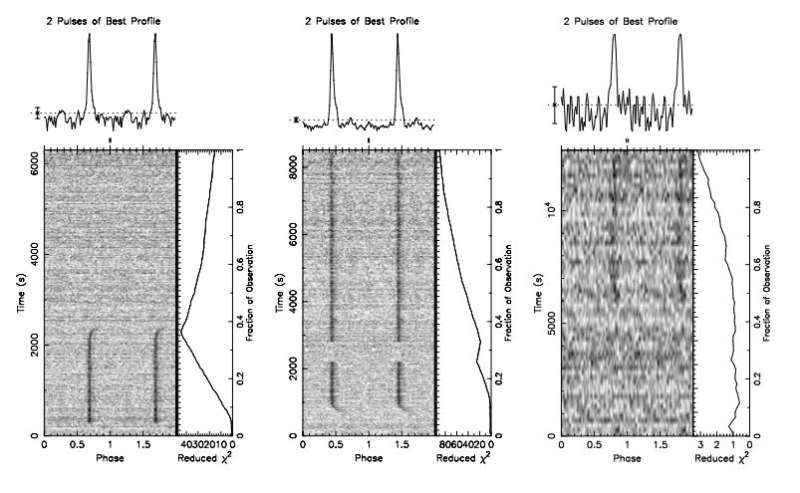March 3, 2020 report
New eclipsing binary millisecond pulsar discovered by FAST

Using the Five-hundred-meter Aperture Spherical radio Telescope (FAST), astronomers have discovered a new eclipsing binary millisecond pulsar in the globular cluster NGC 6341 (or M92). The newly found object received designation PSR J1717+4308A or M92A. The finding is detailed in a paper published February 24 on arXiv.org.
The most rapidly rotating pulsars, those with rotation periods below 30 milliseconds, are known as millisecond pulsars (MSPs). It is assumed that they are formed in binary systems when the initially more massive component turns into a neutron star that is then spun-up due to accretion of matter from the secondary star.
A class of extreme binary pulsars with semi-degenerate companion stars is dubbed "spider pulsars." These objects are further categorized as "black widows" if the companion has extremely low mass (less than 0.1 solar masses), while if the secondary star is heavier they are called "redbacks."
Now, an international team of astronomers led by Zhichen Pan of the Chinese Academy of Sciences Key Laboratory of FAST in Beijing, China, reports the detection of a new pulsar that appears to be a "redback." The discovery was made using FAST, and the study also contains data from follow-up observations with the Green Bank Telescope (GBT).
"In this paper, we present the FAST discovery and initial timing observations of an eclipsing binary millisecond pulsar in M92, PSR J1717+4308A (hereafter M92A)," the researchers wrote in the paper.
According to the study, PSR J1717+4308A has a pulse frequency 316.48 Hz, which corresponds to a pulse period of about 3.16 milliseconds. The pulsar has a dispersion measure at a level of 35.45 parsecs/cm3 and an orbital period of approximately 0.2 days. The orbiting companion is most likely a main sequence star with a mass of around 0.18 solar masses.
The observations have identified two eclipses in PSR J1717+4308A per orbital cycle. The longer of the two, between orbital phase 0.1 and 0.5, lasted about 83 minutes and is most likely due to a companion wind. The shorter eclipse, that took place between phase of 0.06 and 0.12 lasted for less than 10 minutes.
Taking into account all the results, the astronomers concluded that PSR J1717+4308A is a "redback" eclipsing binary millisecond pulsar with a low-mass main sequence or sub-giant companion.
The discovery of PSR J1717+4308A updates the number of known globular clusters with pulsars, which is now 30. The total number of pulsars detected in globular clusters is so far 157.
The authors of the paper also underlined the importance of FAST for studies of pulsars in globular clusters. "The discovery of PSR J1717+4308A or M92A demonstrates the potential for FAST as an excellent probe of the GC pulsar population in the coming years, which suggested that the total population of pulsars in M92 should be one of the highest in the FAST sky," the astronomers wrote.
More information: The FAST discovery of an Eclipsing Binary Millisecond Pulsar in the Globular Cluster M92 (NGC 6341), arXiv:2002.10337 [astro-ph.HE] arxiv.org/abs/2002.10337
© 2020 Science X Network




















